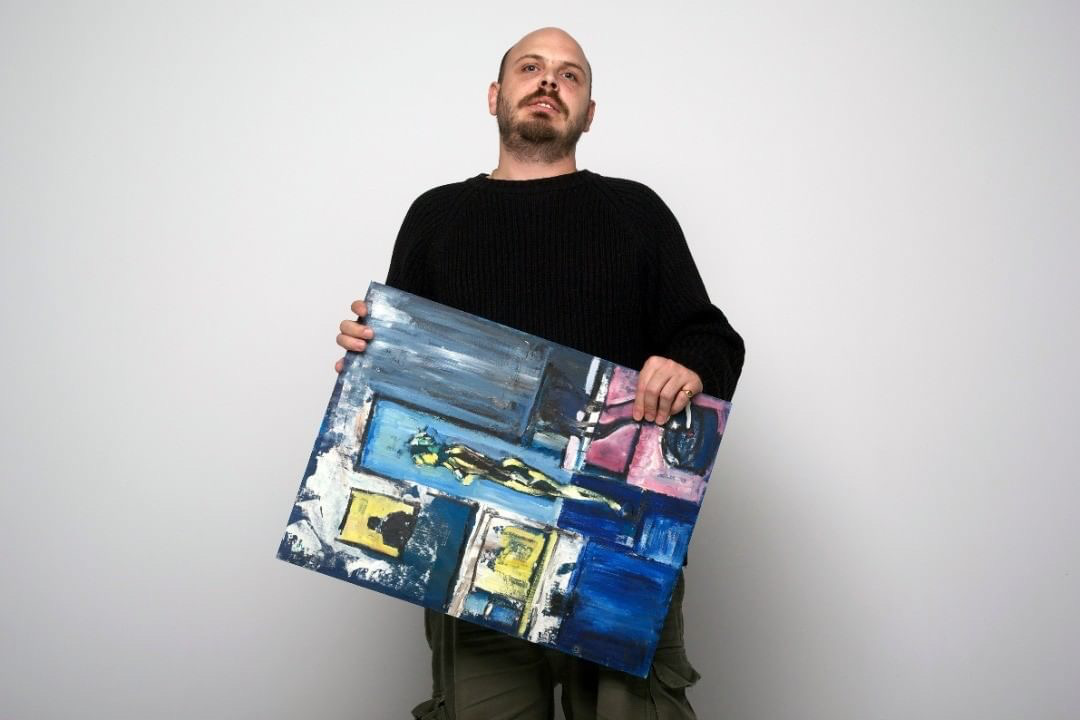Our art world is developing a new dimension, one called non-fungible tokens (NFTs), a cryptographic token. It’s powering a new form of artistic licensing bowing up in recent weeks. Complicated tech concepts are influencing our world, like bitcoin, blockchains, proof-of-work and smart contracts. NFTs are the first art and tech-based concept moving into trendiness and is building up steam to become a movement, but is this a good thing?
When I asked Cornwall-based illustrator Edmond Griffith Jones about NFTs, he said: “It’s a fascinating new idea with new possibilities for digital artists.” There is massive potential for creatives to make a living off the market created by NFTs with its auction style buying system and ravenous buyers, snapping up the weirdest of ‘art’. However, some artists are much more sceptical of this system and its longevity.

NFTs: Cryptographic token is gaining popularity and offers potential profits to artists Image: Katie Goff Photography
“I’m not sure NFTs will last,” said Sam Bradbury, an artist based in Falmouth. “I think it’s a fad that will fade over the next few years.” In the era of hashtags and retweets, trends move like lightning across the world and then dissipate as fast as they come. This can be anything from WandaVision spoilers to Vine to the Apple Car. Many trends are harmless, even funny, like the $1,400 Stimulus Check tweets. There are others, though, that damage communities, usually disenfranchised populations struggling to make ends meet— the #BlackoutTuesday trend is a recent example that inadvertently silenced the Black Lives Matter movement. This is where NFTs come in.
Now, with a pop-tart bodied cat (Nyan Cat) and the world’s first tweet becoming NFTs, I first thought this trend was harmless. Then I noticed artists on my timeline found their hard made work being repackaged into an NFT and sold without any recognition, let alone payment. One digital artist on Twitter, @DevinElleKurtz, searched for her artwork on Marble Cards, another NFT website, and found someone had made a digital trading card with her art – of which she received no recognition, notice or payment.
NFTs are like deeds to property. It’s supposed to symbolise an actual record of ownership, not the item itself. If someone wants to make an NFT for a piece of art or anything really, they do not need to prove their ownership of that item.
“The problem with NFTs is that there’s a lot of money involved. It’s not just somebody stealing your work to look talented but making money off the back of somebody else’s hard work,” Sam explained. These crypto tokens are opening a Pandora’s Box of legal issues, primarily intellectual property (IP) theft violations. At the moment, the legality of this assault on intellectual property is in the air, and it is likely to fall in favour of the original artists, not those making them into an NFT. However, this doesn’t mean it’s suddenly ok.
Even if court cases rule in favour of artists, it still means they have to continually track, locate, and then inquire about their stolen property. Instead of creating beautiful designs, illustrations, taking once-in-a-lifetime photos, artists will be required to be aware of another form of IP theft. They’ll lose time and they’ll lose money.
However, some artists are embracing NFTs like Edmond and especially leading musicians. Shawn Mendes, Grimes, Steve Aoki and Mike Shinoda (from Linkin Park) have used NFTs. They create NFT ‘tokens’ people can buy and redeem for music. While this is one positive, there is still an underlying problem with NFT transactions: the environmental impact.
At the famous Christie’s Auction House, they auctioned a collection of digital art via NFTs, selling for $69 million. However, NFT transactions come with a carbon footprint equivalent to that of powering a standard EU home for one and a half months. This is immense power usage, driven by the blockchain and proof of work system used by Ethereum and other NFT services.
There is a small caveat though. To provide an easy example, I’ll use airlines and flying. If you fly on a plane, you are responsible for a portion of the emissions expended from that plane. However, the plane most likely would’ve flown with you on it or not. This is the same relationship NFTs have within crypto-technology and its carbon footprint. The mining process (which is the primary cost in energy) would continue with NFTs or not.
This is where I’ll return to the idea of trends. They occur whether we want them to or not, and the trend is increasingly a digital one, a crypto one. It’s another minefield for us to traverse through, work in, play in, breathe in for good or for bad. The trend towards the online comes with climate disaster and assault on intellectual property. Artists regularly use their work to speak out against climate change, among a multitude of issues. Some are with NFTs. The question is: will the problems NFTs create last? That will be up to artists themselves.


